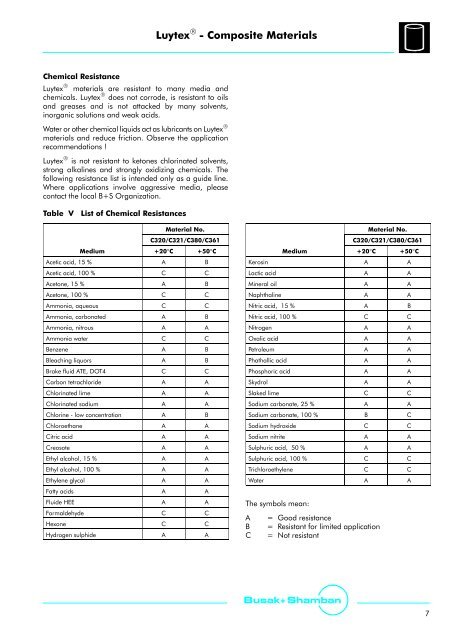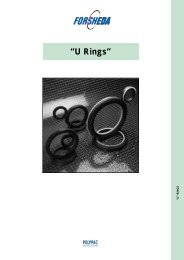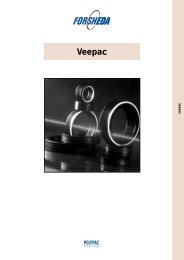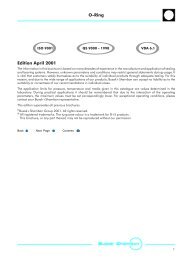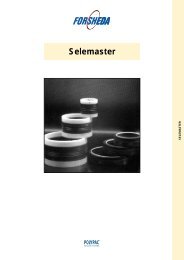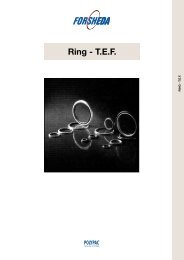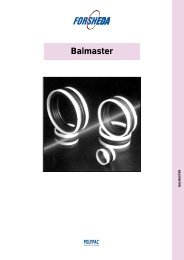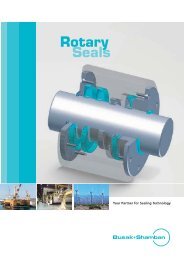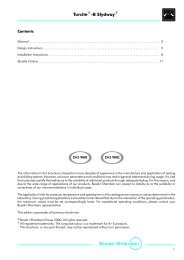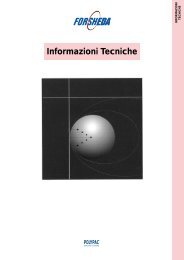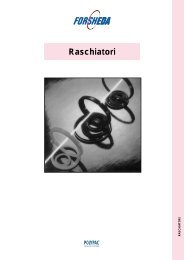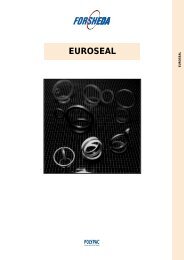LuytexR - Composite Materials - Dilanda.it
LuytexR - Composite Materials - Dilanda.it
LuytexR - Composite Materials - Dilanda.it
You also want an ePaper? Increase the reach of your titles
YUMPU automatically turns print PDFs into web optimized ePapers that Google loves.
Luytex R - <strong>Compos<strong>it</strong>e</strong> <strong>Materials</strong><br />
Chemical Resistance<br />
Luytex R materials are resistant to many media and<br />
chemicals. Luytex R does not corrode, is resistant to oils<br />
and greases and is not attacked by many solvents,<br />
inorganic solutions and weak acids.<br />
Water or other chemical liquids act as lubricants on Luytex R<br />
materials and reduce friction. Observe the application<br />
recommendations !<br />
Luytex R is not resistant to ketones chlorinated solvents,<br />
strong alkalines and strongly oxidizing chemicals. The<br />
following resistance list is intended only as a guide line.<br />
Where applications involve aggressive media, please<br />
contact the local B+S Organization.<br />
Table V<br />
List of Chemical Resistances<br />
Material No.<br />
C320/C321/C380/C361<br />
Medium +20C +50C<br />
Acetic acid, 15 % A B<br />
Acetic acid, 100 % C C<br />
Acetone, 15 % A B<br />
Acetone, 100 % C C<br />
Ammonia, aqueous C C<br />
Ammonia, carbonated A B<br />
Ammonia, n<strong>it</strong>rous A A<br />
Ammonia water C C<br />
Benzene A B<br />
Bleaching liquors A B<br />
Brake fluid ATE, DOT4 C C<br />
Carbon tetrachloride A A<br />
Chlorinated lime A A<br />
Chlorinated sodium A A<br />
Chlorine - low concentration A B<br />
Chloroethane A A<br />
C<strong>it</strong>ric acid A A<br />
Creosote A A<br />
Ethyl alcohol, 15 % A A<br />
Ethyl alcohol, 100 % A A<br />
Ethylene glycol A A<br />
Fatty acids A A<br />
Fluide HEE A A<br />
Formaldehyde C C<br />
Hexone C C<br />
Hydrogen sulphide A A<br />
Material No.<br />
C320/C321/C380/C361<br />
Medium +20C +50C<br />
Kerosin A A<br />
Lactic acid A A<br />
Mineral oil A A<br />
Naphthaline A A<br />
N<strong>it</strong>ric acid, 15 % A B<br />
N<strong>it</strong>ric acid, 100 % C C<br />
N<strong>it</strong>rogen A A<br />
Oxalic acid A A<br />
Petroleum A A<br />
Phathallic acid A A<br />
Phosphoric acid A A<br />
Skydrol A A<br />
Slaked lime C C<br />
Sodium carbonate, 25 % A A<br />
Sodium carbonate, 100 % B C<br />
Sodium hydroxide C C<br />
Sodium n<strong>it</strong>r<strong>it</strong>e A A<br />
Sulphuric acid, 50 % A A<br />
Sulphuric acid, 100 % C C<br />
Trichloroethylene C C<br />
Water A A<br />
The symbols mean:<br />
A = Good resistance<br />
B = Resistant for lim<strong>it</strong>ed application<br />
C = Not resistant<br />
*KI= 5D=>=<br />
7


